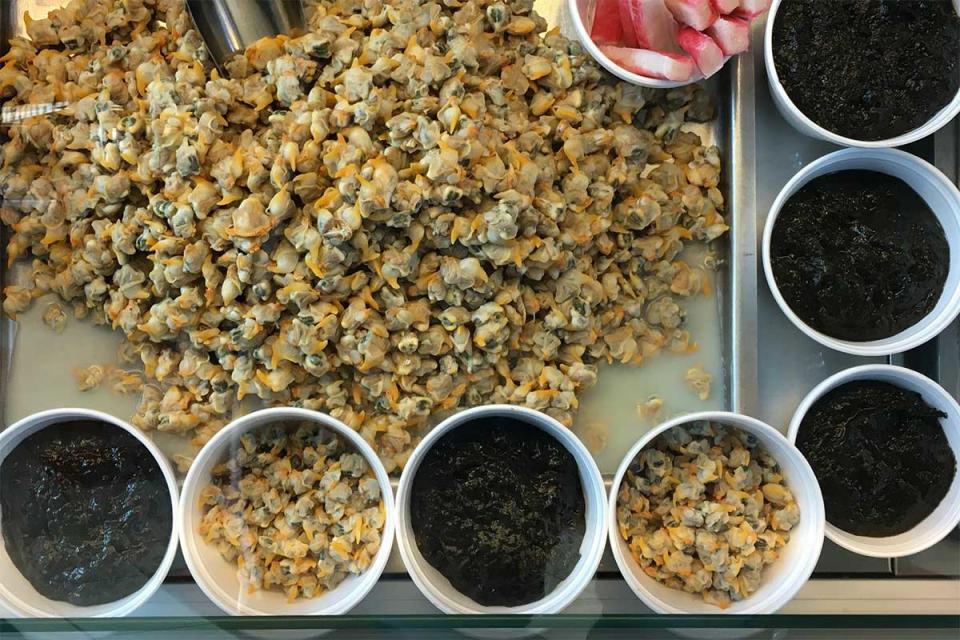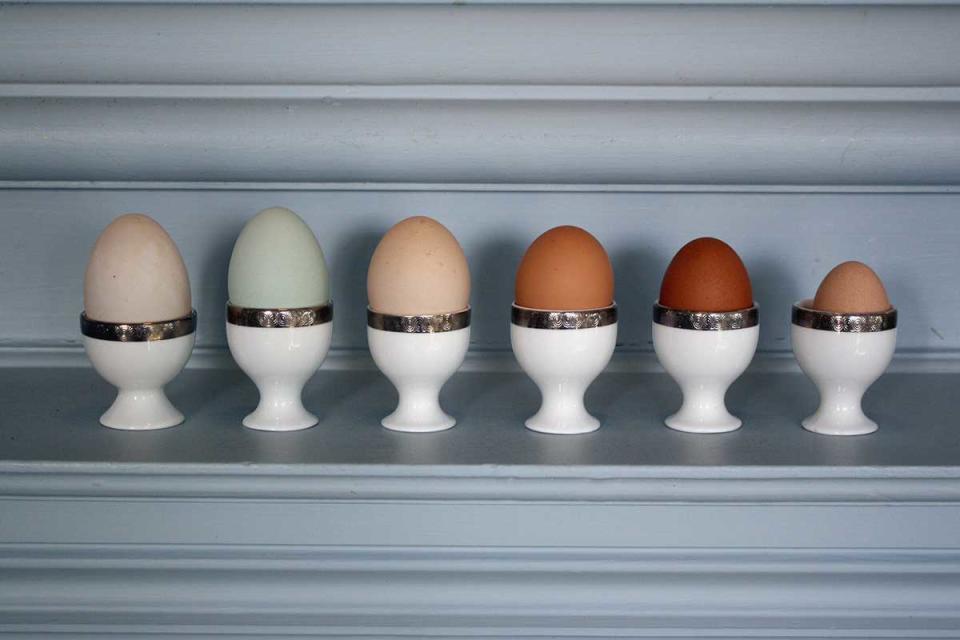What's the Difference Between a Welsh and an English Breakfast?
If you went to Wales and ordered yourself a full Welsh breakfast, your plate would come loaded with bacon, pork sausage, blood sausage, eggs, and tomatoes. But if you're at all familiar with the components of a traditional English breakfast, you'd probably recognize these ingredients as the start of a full English fry-up. So is there a difference between a Welsh and an English breakfast? “Not really,” says Nick Brodie, head chef at Llangoed Hall, a country house-turned-hotel in Wales. But there is one notable addition to the Welsh breakfast that you'd never find on a proper English fry-up: seaweed, also known as laverbread.
Hundreds of different species of seaweed can be found on the coast of Wales, most of which are edible. But only one has been called “Welshman’s caviar” by the Welsh actor Richard Burton. It's purple laver, or Porphyra umbilicalis, in you're into scientific names. The raw seaweed itself, which you can find growing on rocks along western coast of Wales, is thin, no more than a cell thick, and has a dark green, nearly brown hue when picked.
And there's a long history of eating laver in Wales, with “records of its consumption at least as early as 1607,” writes Colman Andrews in The British Table: A New Look at the Traditional Cooking of England, Scotland, and Wales, “and laver was an important source of nutrients for miners and the rural poor throughout the 1800s.” The seaweed still eaten throughout Wales, most commonly as laverbread, also known as bara lawr in Welsh.
Calling this dish “bread” is a little misleading, however. There's no flour or yeast or any conventional baking involved all. Laverbread is actually a kind of stew, though that might be a bit of a generous description. After it's harvested, the laver is dried. Then to make laverbread, “The seaweed is boiled for a number of hours until it physically breaks down,” explains Fran, the sales and marketing mermaid extraordinaire (and yes, that’s her real title) at the Pembrokeshire Beach Food Company, which specializes in collecting and serving seaweed from the western Welsh coast. “Only salt and pepper are added to what becomes a paste,” which has an admittedly slimy texture that looks a bit like oil sludge. Andrews notes in his book, “Having tasted laverbread once ... I can only say that for this reason alone I’m glad I’m not Welsh.”

Even Brodie, the chef at Llangoed Hall, doesn’t exactly have the kindest things to say about the texture of laverbread, straight from the pot. “We used to do it as the seaweed itself," says Brodie, “but then I started looking into more classic recipes. They do it with the cakes, panfry it, and I think it’s a better product on the full English anyway, than loose laverbread itself, you know?”
Brodie now serves the laverbread as a little fried patty that could be mistaken for the blood sausage that sits next to it. "The laverbread, we mix with porridge oats and clarified butter. Pan fry it. So we put that on and serve that as our Welsh breakfast," he explains.
“And all our ingredients are from Wales,” Brodie adds, almost as an afterthought, about what makes the Welsh breakfast different than an English fry-up. And really, that commitment to using local Welsh ingredients is as much a part of a Welsh breakfast as laverbread itself.
At Llangoed Hall, you can order either chicken or duck eggs for your Welsh breakfast-both types of poultry are raised in the gardens behind the country house that is believed to have served as the site of the first Welsh parliament in the sixth century. The blue eggs come from Legbars, a specific type of British chicken; the tiny brown eggs are from Bantam chickens, and the large, almost marble looking eggs are the ducks', who are also the "best-yielding," according to Brodie. "They give up for about a month, but then the rest of the time, they lay like crazy."

Even the bacon and blood sausage come from close to home. It turns out that the man who tends the gardens at Llangoed Hall also farms pigs, about ten miles away, and he's become the kitchen's sausage and bacon purveyor. "He came in to drop sausages off this morning," says Brodie. "He’s got sheep and stuff as well, so he makes all that as his half-full-time job and then he comes here for his other full-time job." When the gardener-slash-pig farmer is not making blood sausage, he's caring for the tomatoes growing in the greenhouses that will also eventually end up on the diner's breakfast plate.
In Wales, the effort to source locally just makes sense. "For me, it’s putting it back to a country house where you should be self-sustainable," explains Brodie, and that ethos-of cooking and eating what you have, and making the most of what's available in this small country-is at the core of Welsh cuisine.
So what's a full Welsh breakfast? It's when you're able to look down at your fry-up and know that everything is local, including the seaweed.


